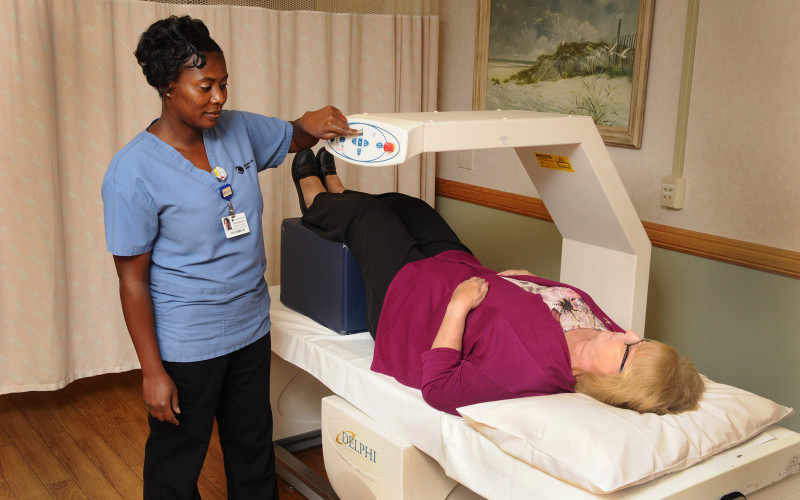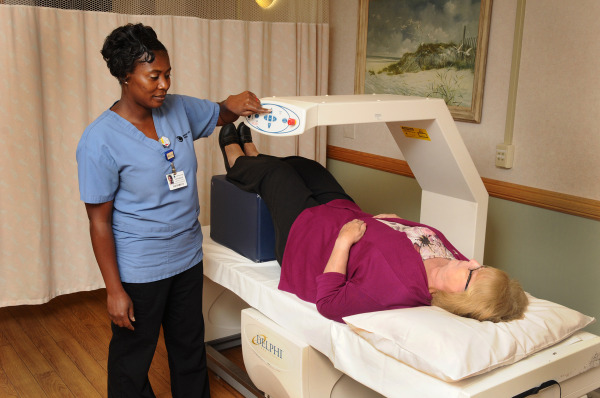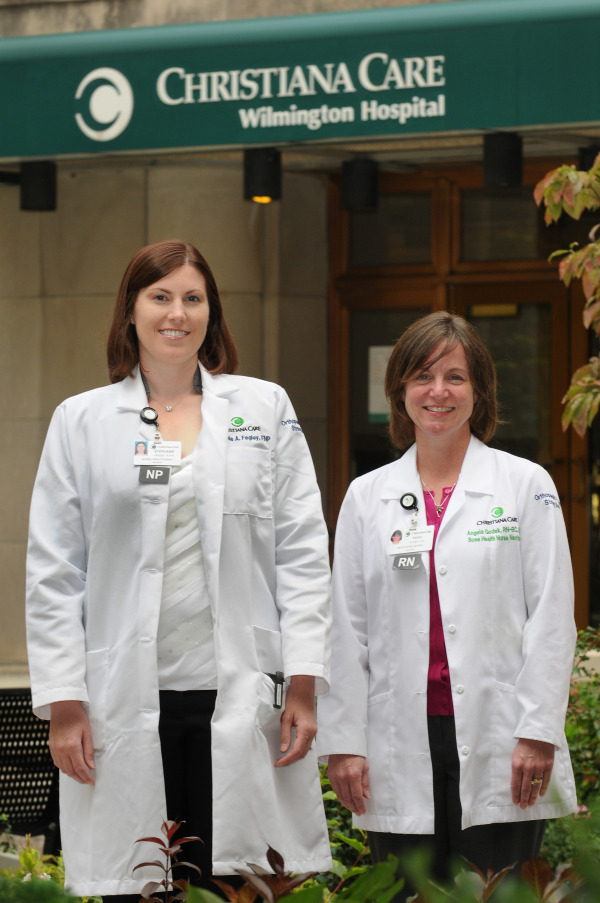Strong Bones program empowers patients, physicians to fight bone fragility


Primary care providers understand that bone health and assessment is an important component of preventive health care. Unfortunately, bone health is difficult to assess in a primary care doctor’s office.
The Strong Bones program at Christiana Care serves as a resource for primary care physicians and their patients in detecting and treating bone fragility. In development for three years, the first Strong Bones clinic opened at Wilmington Hospital in April and now features a dual X-ray absorptiometry (DXA) scan machine to measure bone density. Christiana Care plans to expand the program to further address this health care need that too often goes unaddressed.
“The data is shocking,” said Brian Galinat, M.D., MBA, chair of the Department of Orthopaedic Surgery. “In the United States, $35 billion is spent on the more than 300,000 hip fractures each year, and that’s just a fraction of the more than 2 million fractures caused by bone fragility. We can greatly reduce health care costs by providing doctors and patients the means to assess and address bone fragility.”
“First, we want to help inventory patients’ risk factors,” said Timothy Manzone, M.D., section chief of Nuclear Medicine and chair of Christiana Care’s Bone Health Advisory Committee. “They include age, gender, medications that may increase bone fragility, conditions like rheumatoid arthritis, whether they are a smoker or a drinker, whether they have a family history of fractures and, most importantly, whether they have suffered broken bones themselves. Then, we want to provide the technology to confirm the condition and the guidelines on how to treat it.”
Previous fractures, Dr. Manzone explained, can be signs of bone fragility, but too often patients assume a fall caused a break, rather than fragile bones that were broken by what should have been an otherwise harmless trauma. When they are treated for a fracture, only about 20 percent of patients are evaluated for bone fragility, he said.
“Bone fragility presents no symptoms, so often a fracture is the first time a patient and his or her physician address the possibility of a larger issue,” he said. “We want to encourage patients and primary care physicians to use a fracture as a cause to address bone health but, more to the point, to preemptively address the topic and take the safe and effective steps to improve bone health.”

Dr. Galinat said that Christiana Care is committed to supporting primary care practitioners and their patients in managing bone health.“We are here to help augment the primary care physician’s relationship with the patient through another tool at his or her disposal,” he said. “For people who are older or at risk, bone density information should be as important as blood pressure and other numbers vital to preventive care. The Strong Bones program gives physicians and patients a resource to get a DXA scan, outcomes-based guidelines to craft a treatment regimen, and care coordination that assists the patient and primary care physician in improving bone health.”
For more information on the Strong Bones program, call 302-733-5592.